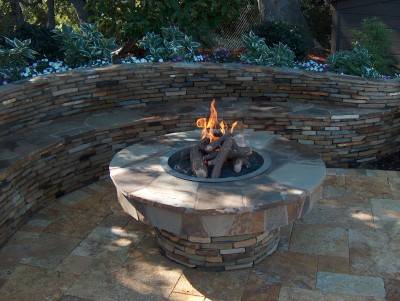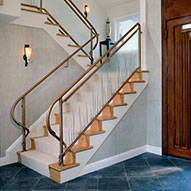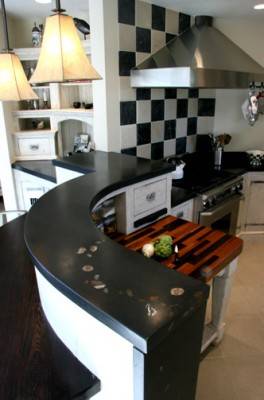Yesterday’s Stone Exterior and Interior Design Materials
Like the proverbial rolling stone, exterior and interior design materials change. Every design style eventually runs its course. These styles are influenced by architects, designers, consumer demand and available materials. In the last 7 to 10 years there has been a shift away from exterior and interior wall covering mediums such as brick, wooden siding and paneling and stucco towards more decorative and aesthetic products such as stone thin veneer products.
Today – What’s New in Stone Exterior and Interior Design Materials?
The advent of natural stone thin veneers which are ¾” to 1 ¼” thick and fall below the 15lb per square foot dead load limit on walls, make it an ideal material for the design theme of a new home or as that special ingredient for a remodel. Natural stone, in all its variations in size, color and texture can either blend into a room’s décor or make a very strong statement to the design identity.
As with many mediums, imitation and substitute products have been developed. As these products gain acceptance in the marketplace questions arise as to which product is more viable and especially in these slower economic time, most economically feasible.
To answer that question, one really has to look at the new paradigm of the building industry of the sustainable building trend. The new materials and systems are not only friendlier to the environment but are being made to last longer and function more efficiently. This is one reason that stone veneers are specified more often now than in the recent past.
Two Types of Stone Veneers
Natural (real) Stone – Natural stone is self explanatory. It is a naturally formed product that is quarried for veneers and has had some type of fabrication done to it to shape it and bring out the inner, un-weathered color of the stone. The durability and value based on resale of a property has made it the sought after product.
Manufactured Stone – Manufactured stone is generally made of a cast concrete based product that is either face-dyed or painted to resemble various natural stone formations. Manufactured stone has been marketed as a less expensive alternative to natural stone. Until recent innovations in manufacturing natural stone, that statement was true.
Which Stone is best for my Design Project?
When you tally up the pros and cons of the two in today’s sustainable market combined with the lowering costs of the natural stone, it becomes readily apparent that the real stone thin veneers have taken front stage in the market. Even more importantly, you will get a product that will stand the test of time in a world where doing things once helps save future resources and time.
So, as you are making those design changes now and finding yourself less inclined to using the older mediums such as brick or wood siding, you want to set up your home so that you won’t have to come back and redo a project down the road. You also will be making a real design statement while increasing durability and dependability by using natural stone. After all, not every stone nowadays is a real stone.
Jim Christensen – Granite Rock Co
Phone: 408-996-4500
Email: jchristensen@GraniteRock.com






